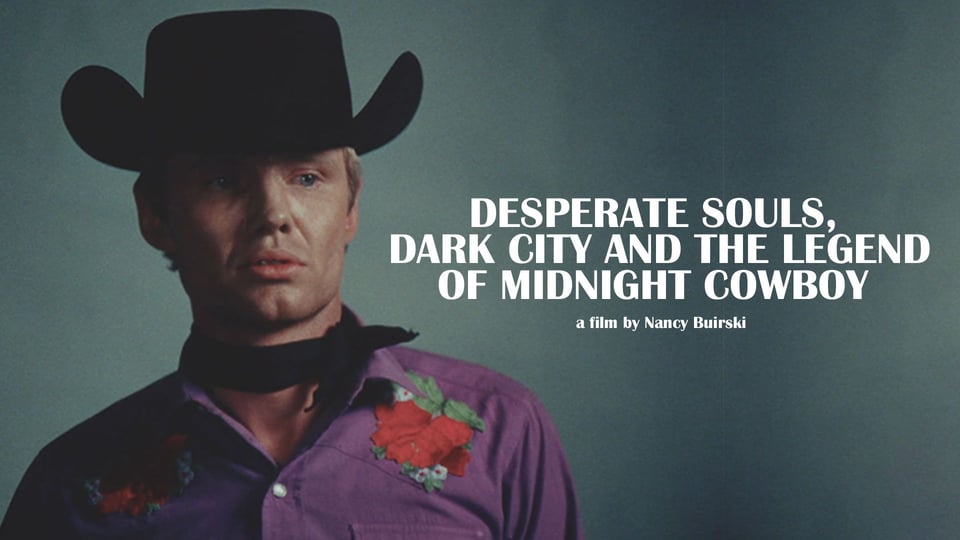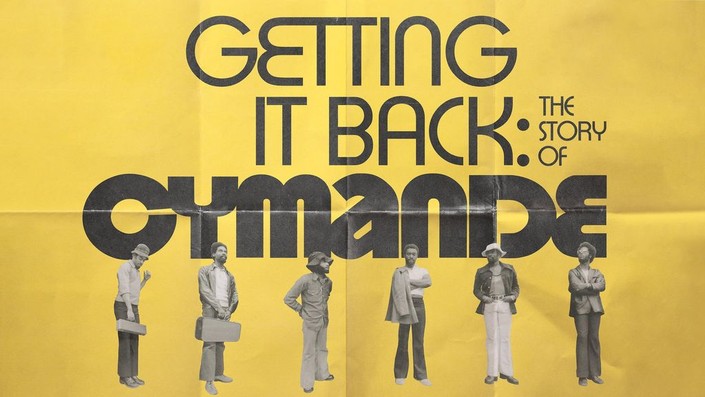Festivals

How to Mediate the Iconic
100 Ways to Cross the Border is director Amber Bemak’s hybrid documentary film about the forty-year-career of agent provocateur performance artist and activist Guillermo Gómez-Peña, alongside his international troupe La Pocha Nostra. Presenting a portrait of this troupe travelling on the road for three years, we are gradually introduced to an ensemble comprising performers of different generations, gender complexities and ethnic backgrounds. Gómez-Peña himself has a persona that draws combined allusions to Frank Zappa, Captain Beefheart and Salvador Dali.
The philosophical frameworks of an artist with a dedication to artistic interventions on the US-Mexico border are presented. Using a mix of exclusive archive material, interviews, manifestos, and performance scenes, director Bemak delivers an immersive portrait that was able to experience the shifting of Goméz-Peña’s boundaries first hand, and sometimes involuntarily.
With just a single photograph of his grandfather Juan De Jesus as precious posterity, Dutch director Sherman De Jesus travels to present-day Harlem and the former photo studio of James Van Der Zee. In this very personal film, it follows the director as he delves into the history of the Harlem neighbourhood in order to discover the story behind the only photo he has of his grandfather; a black and white portrait of a proud man in a white tropical suit. The resulting film, The Photograph, shows how Van Der Zee documented the Harlem Renaissance in the 1920s, capturing the zeitgeist in thousands of photos and portraying black people justifiably, in their best attire, as they themselves wanted to be seen, as the people they were. An era now considered as one of hope and creativity, De Jesus attempts to bring lineage from the spirit of 100 years ago into the present to see how much of the legacy endures in the lives of Harlem’s inhabitants in the present day.
Director Amanda Kim comprises a reappraisal of an artist who is considered the father of media art in his Nam June Paik - Moon Is the Oldest TV. With famous Korean actor Steven Yeun providing the voiceover for the artist’s own words, it is also the first portrait that looks at Nam June Paik’s formative teenage years in Korea. Furthermore, it takes a revisionist and detailed look, from ground-breaking works in soundscape design, radio and TV, video art, and his entertaining prophecies. Paik would prophesize the internet and meme culture as early as 1974 in his work Electronic Superhighway. An assortment of his companions and famous friends; Arnold Schönberg, Karlheinz Stockhausen, and especially his music teacher, lifelong friend and advocate John Cage, vividly describe his personality. Cage would famously make the droll comment that Paik’s provocative work and performances were, “…more entertaining to recall than to experience at the time.” An artist comparable with the likes of Andy Warhol and Jean-Luc Godard, Paik’s opaque persona has ensured a legacy that resists artistic categorization.
An accessible and hypnotic portrayal of the French philosopher Emmanuel Levinas, whose primary message to emanate from the face-to-face relation, “Thou shalt not kill”, is the platform for Absent God, the fascinating film essay by Yoram Ron. The director foregrounds Levinas’ Jewish humanism, his comparison of ethics to metaphysics and ontology, while exploring his Ethics of Visuality (the contemporary gaze) as a reflection of the ‘Other’. However, he goes beyond the mere revisionism of Levinas’ concepts in that he transposes the philosopher’s existentialism, phenomenology, and the historical contexts of the Shoa with the contemporary; namely the intellectual-political situation in Israel and the notion of Jewish cultural anorexia. A film poignantly exemplary of this year’s DOKUARTS theme, there is also a contribution from Levinas’ former university student Luc Dardenne, who reveals how the cinematic stylisations of the Dardenne Brothers were influenced by the philosopher’s thinking.
The José Luis Lopéz-Linares directed Goya, Carrière and The Ghost of Buñuel, accompanies the renowned French scriptwriter Jean-Claude Carrière as he travels by train through Spain for what would be his final journey there (he died in Paris early in 2021) and to take a last look at some of his favourite works by Francisco José de Goya y Lucientes, the late 18th and early 19th century artist, universally known as Goya, and considered one of history’s greatest ever painters. For his final critical reappraisal, Carrière visits the canvases, tapestries and murals in a variety of settings where the artist’s work resides, to meditate on their craftsmanship, and why they have meant so much to him personally. As the title alludes it is also a final nod to his friend and collaborator, the Surrealist filmmaker Luis Bunuel.

The ‘Other’ Documentaries: Music, Design and Theatre
Ever Deadly is director Chelsea McMullan’s collaboration with the Canadian Inuk throat singer Tanya Tagaq to celebrate the work of the versatile songwriter, also a novelist, actor, and visual artist. More known internationally for her collaborations with Björk, including concert tours and the 2004 album Medulla, Tagaq continues to be popular in her own right at Canadian folk festivals. This film progressively portrays not just an exceptional performer but one whose unique vocal art is shaped by tradition, trauma, environment, and contemporaneity. The director is invited to the singer’s home retreat in Nunavut, on the south coast of Canada’s Victoria Island, and also meets the audience at one of her unique and compelling concert performances.
Heloísa Maria Buarque de Hollanda (1937-2018), known artistically as Miúcha, was a singer and composer who belonged to a Brazilian musical family. For Miúcha, the Voice of Bossa Nova, director Liliane Mutti has assembled what becomes a poignant life story told through a feminist perspective. A pupil of Vinicius de Moraes, the second wife of João Gilberto, the musical partner of Antônio Carlos Jobim, and the vocal accompaniment to Stan Getz’s saxophone, Miúcha had to overcome the dominant presence of her male bossa nova colleagues, something which threatened to overshadow her artistry. Through the assembling of stunning archival material and concert footage, the director succeeds in capturing Miúcha’s vibrant spirit, resilience and virtuosity to become an independent voice and role model.
As part of the activism for positive social change in the 1960s and 1970s, some Belgian architects had utopian visions of their own which drew on these political tides. The resulting plans were to design buildings that were simple in structure, and with its inhabitants’ harmony and quality of social living at the forefront of their plans. Assembling archive footage, Elodie Degavre’s La vie en kit (Life, Assembled) also talks to the surviving architects about their approach to this architecture of altruism, its legacy, and how useful or otherwise such ideas would be in today’s age of architectural megalomania, higher and higher-rise vanity projects that are financially out of reach for most.
Since the 1970s the working methods of Wolfgang Laib's art has used natural material in a methodical way that also requires time and patience. Fortunately, this is in tandem with the eastern philosophy that influences him. For a 2023 exhibition of Laib in Stuttgart, cultural documentary filmmaker Maria Anna Tappeiner accompanied the artist for twelve months at his homes in Upper Swabia, Germany and southern India and the resulting film is Wolfgang Laib - Here, Now and Far Beyond. The time spent with Laib underlines how his work attempts to resist the otherwise fast-paced nature of the modern art scene. The changing seasons are also decisive for the artist in the choice of where he lives and works and also personal objects and nuances that are most important and relevant for his artistic expression.
Robert Fischer’s compelling Das Arturo-Projekt (The Arturo Project) depicts a charming labour of love for those involved at a small private theatre in Bavaria called the Theatre Wasserburg. Meticulously, it follows the theatre’s extraordinary production of Bertholt Brecht’s famous play Arturo Ui during the pandemic, a production that also brings the story up to date. Fischer immaculately records the nuances involved in the rehearsal process of the musical production, where actors, circus artists, stilt walkers, and musicians are brought into collaboration for the first time. This document for posterity now serves especially as a tribute to Uwe Bertram, the theatre actor and director who died in November 2022, aged just 59, and appropriately remembered here for the dedication to his work and for his humble personality.
Saskia Boddeke is a Dutch multimedia artist as well as a stage, opera and film-director, and a long-time collaborator of British filmmaker Peter Greenaway. When she saw a performance of the opera Furia, a fairy tale of lust and anger written by Oscar Wagenmans, by a professional theatre group for actors with intellectual disabilities called Kamak, she was so impressed that she decided to make a film about the ensemble. Inside My Heart has the director following the rehearsal process of a lavishly designed production, and the restrictions of performing on stage, which are transposed cinematically with beautifully staged shots. Boddeke uses rich, saturated colours that seamlessly blend the magic of an opera and the depth of a documentary, shifting back and forth between events onstage and behind the scenes. The film was honoured at the 2022 IDFA (International Documentary Festival Amsterdam) in the award category for Special Mention Best Dutch Documentary.
Danish director Lea Glob initially planned to make a straightforward portrait of young maverick artist Apolonia Sokol, who was born into a French artistic family. However, the resulting Apolonia, Apolonia ended up as a 13-year long interaction, following her career path and philosophy during this period, underlining the director’s fascination with the subject. Having an extensive amount of material to choose from, bold editing choices were required to justifiably portray the energetic Apolonia, who, despite acceptance into a prestigious art academy the age of 21, is still trying to find her niche as an artist, and lives in an underground theatre in Paris. For her own dedication, Lea Glob was also awarded at the 2022 edition of IDFA with the prestigious accolade of Best Film in the International Competition.
By Steven Yates
The 2023 DOKUARTS Visual Alterity program can be found here:
http://www.doku-arts.com/en/start

